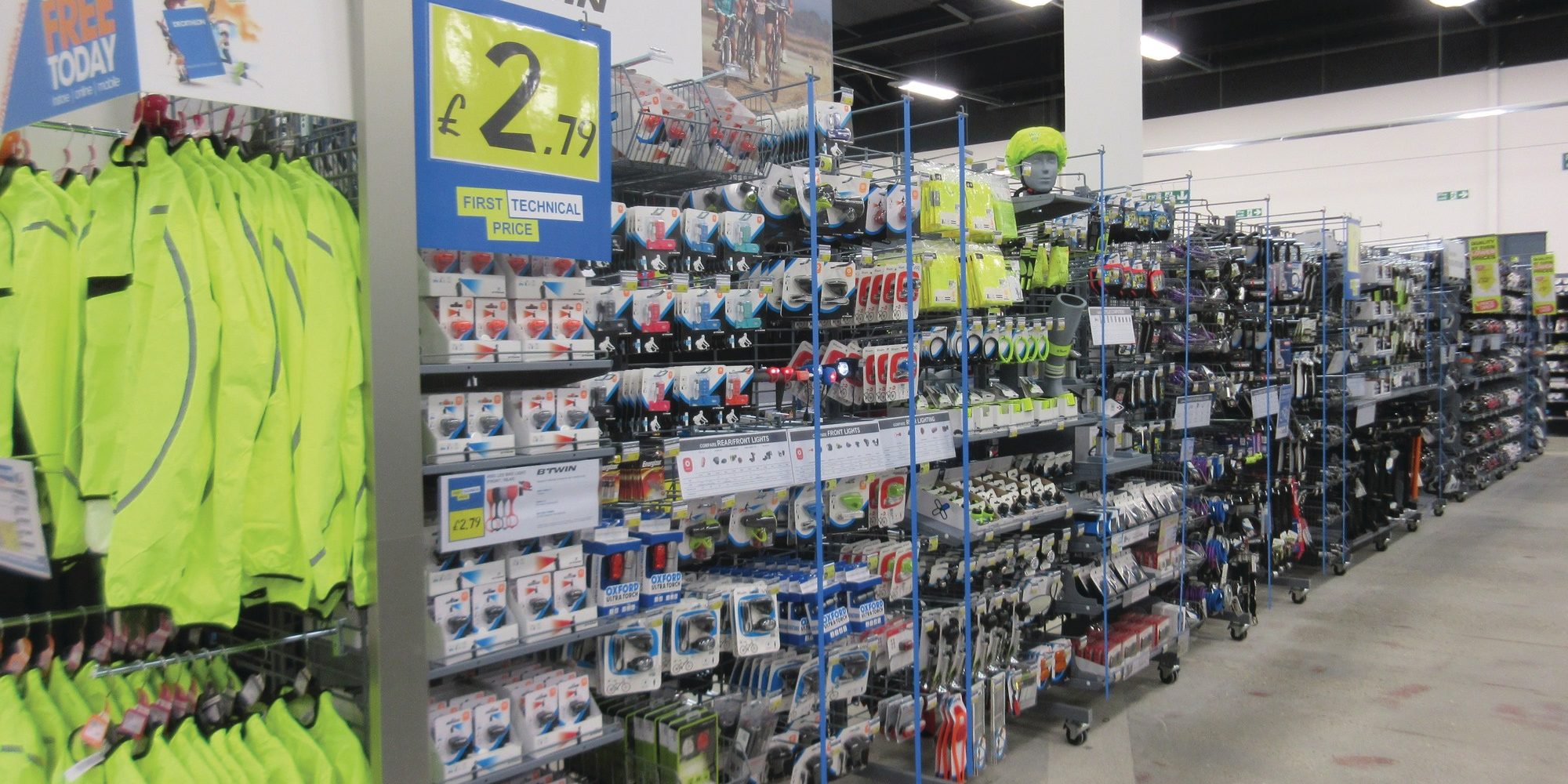France sporting goods retailer Decathlon said,last year their sales increased by 11% and thanks to the RFID technology deployed by 951 stores and 43 warehouses (Logistics Center). Decathlon RFID project leader Jean-Marc Lieby said the company also reduced the rate of 9% loss of goods. At present, most of the stores using RFID technology at the checkout counter and security, used for inventory check purposes. India and Brazil stores use RFID only for inventory tracking. In addition, the company’s new opened stores will use RFID technology in the future.
The retailers attributed 5% sales growth to the use of RFID inventory tracking system. The company added that new stores and rising of commodity prices are also part of reason for sales rising.
Decathlon is the world’s largest retailer of sports goods and sportswear, stores in Europe, China, Morocco, India, and Brazil. The retailer uses 50,000 containers shipped 6.5 billion items each year. Lieby said about 85% products using RFID tags. Stores’ sizes are differsnt, sales of merchandise are not exactly the same. Typically, they have an area of 1000 to 12000 square meters, 35000 different goods on sale, covering 65 sports.
Lieby said about 5 years ago, the company began to use EPC UHF RFID technology to enhance the inventory accuracy store and logistics, so as to ensure that the consumer is available when needed. This work is carried out by the Oxylane Group (parent companies of the Decathlon) RFID project leader Patrice Riboult responsible. Under Decathlon’s survey of consumer dissatisfaction with the main reason is always the same: The product was not found on the shelf. The company also wants to enhance the checkout payment process fast and easy, and started to research using RFID tags to achieve this goal.
After research a number of RFID companies and schemes, Decathlon launched its own RFID company in 2010. The company named Embisphere, not only for Decathlon design, production, and deployment of RFID hardware and software products, but also provide RFID solutions to other retailers.
In July 2013, Decathlon begins using tags on the Passion series products, to track at the distribution center to the RFID store. At spring of 2014, almost all the Decathlon products at the logistics center are using tags.
At the second half of 2014, 800 Decathlon stores are equipped with RFID technology, used for
inventory, cash registers, and EAS anti-theft. Decathlon produced products are labeled at factory, and marks the third party goods in logistics center. These logistics centers in a variety of ways using Embisphere reader, including in the process of receipt goods and transport goods to read labels. Meanwhile, Decathlon attached RFID EAS hard tags provided by checkpoint company to high value items for anti-theft.
Embisphere is responsible for the Decathlon RFID tags’ management, including label supplier’s selection, quality control checks, and so on. Embisphere also defines and specifies the technical solution of stores and logistics centres.
After RFID tags attaching to the goods, the label ID will bind the SKU of the item information. These information will be stored in the Decathlon within their own software.
At Logistics Center, employees use the built-in Embisphere readers’ mobile cart to carry out inventory counting. Number of logistics centres have also been installed Embisphere reader in the sorter. The reader can help staff to confirm the transport of goods is correct.
Inside the store, employees using Embisphere handheld reader for inventory counting. The reader is shaped like a small badminton racket, very light weight, can be easily accessible to the items on the shelf. Employees also carry smartphones via Bluetooth to receive data reader. Staff in these stores can be viewed on a Smartphone to read to the number of items, and upload the data to the Decathl’s database.
All the stores were also built Embisphere reader at the cash register. When you register, staff are required to place the goods on the reader for reading label information. For 15% barcode label goods, staff need to scan separately. If EAS hard tag on the merchandise, employees are able to use the separator for recycle.
When you leave the store, employees through the RFID EAS gate’s antennas. Checkpoint and Nedap provide a gate reader and antenna. The EAS System can be detected EAS hard tag through the gate, while, label data back will to software, determine whether the goods have been sold. If the products are not sold, the system will issue a warning to remind.
The RFID system’s installation was done between June and March 2014. The company also spent a month training time for employees. Lieby said: “This is not a simple matter, the company has stores in 17 countries, employees speak a variety of languages. Fortunately, employees respond well to this new technology and understand the value of this technology. ”
Lieby said the technology not only improves inventory accuracy, reduces staff time spent on inventory. Most of the stores inventory efficiency by up to 5 times, also up counting frequency to twice times.
If you are integrator, please contact us directly; If you are looking for an entire solution, we can introduce you your local integrator to help you out.
From:rfidworld.com.cn/






